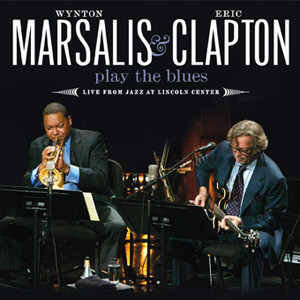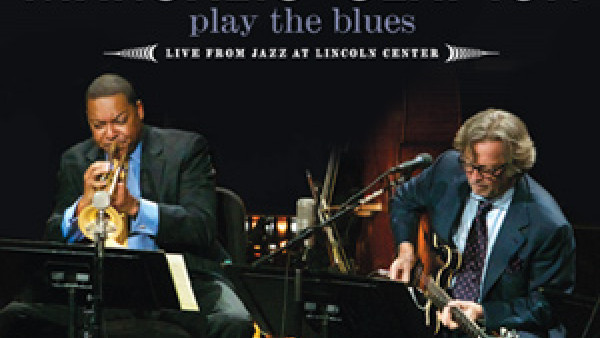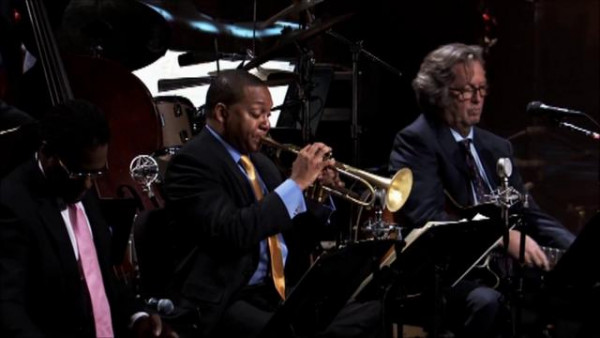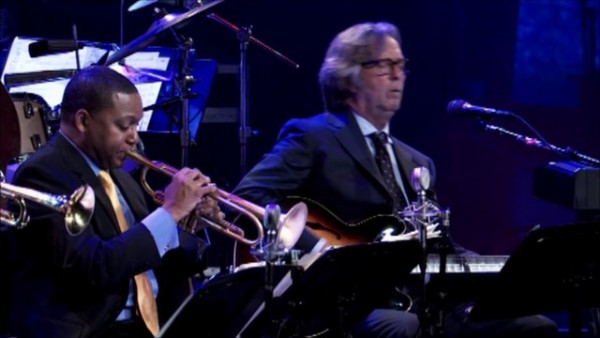Eric Clapton and Wynton Marsalis at Lincoln Center - Review
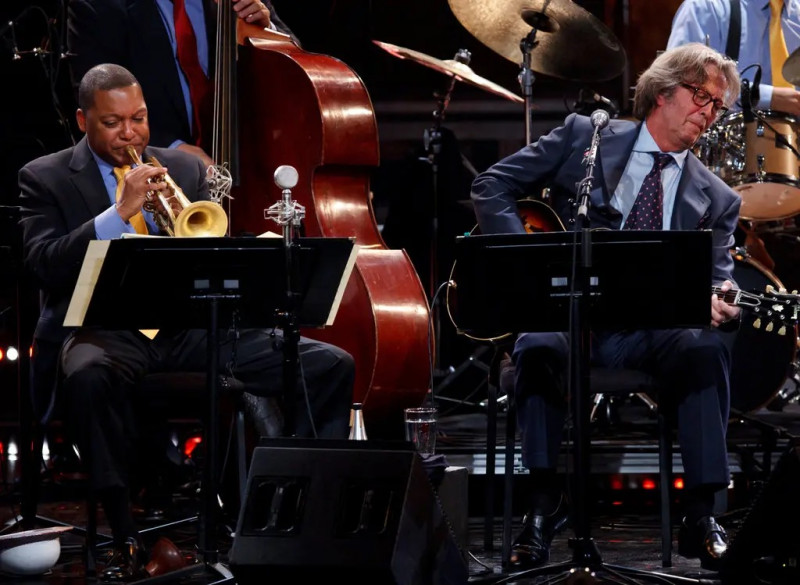
(photo: Richard Perry/The New York Times)
Eric Clapton chose the songs and Wynton Marsalis laid out the musical territory for “Wynton Marsalis and Eric Clapton Play the Blues,” the Jazz at Lincoln Center concert at Rose Theater on Friday night, the first of two shows. It was a concert so fixated on elegant details that its blues were bloodless.
Mr. Clapton selected songs recorded long ago by Louis Armstrong, Howlin’ Wolf, Memphis Minnie and Bessie Smith. Mr. Marsalis’s designated musical turf was, with a few time warps, the vintage New Orleans sound of King Oliver’s Creole Jazz Band, complete with tandem-trumpet theme statements (from Mr. Marsalis and Marcus Printup), briskly strummed banjo (from the New Orleans stalwart Don Vappie), growling trombone (from Chris Crenshaw) and scampering clarinet (from Victor Goines).
Mr. Clapton’s electric-guitar solos were the historical wild card, nudging the music from 1920s New Orleans toward 1950s Chicago and Memphis. “For me to be able to come in here and try and make my little jingly stuff work inside this,” a smiling Mr. Clapton said onstage, gesturing toward Mr. Marsalis’s band, “it’s a challenge.”
He was all too humble and accommodating compared with, for instance, Willie Nelson singing the blues with Jazz at Lincoln Center. Mr. Clapton’s vocals were tucked into the sound of the band; his guitar solos took their turn after the band’s players.
The arrangements, by Mr. Marsalis, were impeccable in their way: struts, two-beats and shuffles, full of traditional-jazz polyphony and intricately written horn-section riffs, like train-whistle trumpets near the end of “Joliet Bound.” When Mr. Clapton performed his own “Layla” — at the urging, he insisted, of the band’s bassist, Carlos Henriquez — it was recast as an old-fashioned slow drag.
Band members’ solos generally stayed within the New Orleans idiom, though Mr. Marsalis and Dan Nimmer on piano toyed with later eras. Ali Jackson’s drumming was a slyly knowing period piece; the finesse of his snare-drum rolls, accelerating then tapering down to a few poised taps, was one of the band’s delights.
And when Mr. Clapton’s moments came, there were his guitar solos. He skidded into “Ice Cream” with rockabilly aggression, glided into “Careless Love” with smoothly airborne country phrasing, moaned and flailed in “Layla” and got a blues-club bite in Big Maceo’s “Kidman Blues.”
The program didn’t imply a strict structural definition of the blues; some songs had 12 bars and verses in AAB form, some didn’t. Nor did the concert seek an emotional frame for the music or an impact beyond the skill and joviality of the collaboration. For Howlin’ Wolf’s “Forty Four,” the beat had the right sidelong stomp, and the guitar solo had some claws, but there was none of the weary, ornery menace staked out by the lyrics. “Careless Love” was more nonchalant than heartbroken; “Joe Turner’s Blues” barely hinted at elegy.
Taj Mahal, who opened the concert with a solo set, returned to sing the New Orleans funeral standard “Just a Closer Walk With Thee,” instilling it with grainy gospel conviction. But for most of the concert the blues was presented as something scholarly and neatly accomplished: an exercise, not an exorcism.
by Jon Pareles
Source: New York Times

